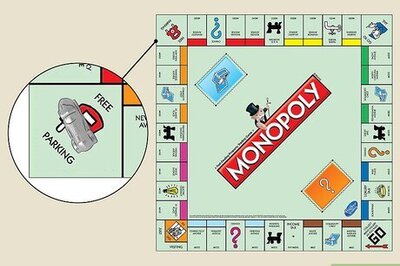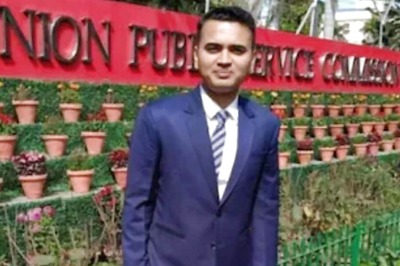
views
New Delhi: When Priyanka Gandhi Vadra was made the general secretary as well as the poll in-charge of the Congress in Uttar Pradesh East earlier this year, many party leaders hailed the decision as a “game-changer”. She, along with Jyotiraditya Scindia — who was put in-charge of West UP — was tasked with turning the tide in favour of the grand old party in the politically crucial state ahead of the Lok Sabha elections.
However, the road ahead for Priyanka Gandhi is bumpy. The area under her command is Purvanchal and most of the constituencies in Awadh region. In the previous part of this series, News18.com explained how Congress has not been as successful in Awadh as it would have imagined to be despite Rahul Gandhi and Sonia Gandhi’s constituencies being in the region. The harsher test, though, lies in the Purvanchal region.
How Purvanchal Votes
The eastern-most region of UP, famously called Purvanchal, accounts for 20 Lok Sabha seats and is home to some high profile constituencies such as Azamgarh from where Samajwadi Party chief Akhilesh Yadav is set to contest, a seat previously represented by the UP chief minister, Gorakhpur, and Varanasi — represented by Prime Minister Narendra Modi at present.
The region has traditionally seen a tough contest between the Bharatiya Janata Party (BJP) and the SP over the last six Lok Sabha elections, with BJP having an edge over SP. And here it gets interesting — while Mayawati’s Bahujan Samaj Party (BSP) is a distant third, the Congress has been a marginal player in Purvanchal.
Since 1996, over the course of six general elections, the BJP has on an average maintained a vote share of 30.86 per cent (it received a significant push in the 2014 ‘Modi wave’) in the region, followed by the SP and the BSP at 27.19 per cent and 23.56 per cent, respectively. Congress, on the other hand, has had a vote share of just 9.67 per cent.
During the 2014 ‘saffron wave’ in UP, the BJP had swept the region with 18 of 20 seats of its own with 41.1 per cent of votes while one came from its ally Apna Dal. Azamgarh, which SP patron Mulayam Singh Yadav had contested along with Mainpuri in West UP, bagged the seat for his party.
While BSP was humiliated not just in the region but throughout the state with ‘zero’ seats, Congress, which had secured three seats in Purvanchal in 2009(its best performance since 1984), drew a blank in 2014.
Interestingly, apart from 2014, Congress had failed to win a single seat in Purvanchal in three consecutive elections, that is, in 1996, 1998, and 1999.
Sanjay Kumar, professor and director at the Centre for Studies of Developing Societies (CSDS), is of the opinion that Priyanka’s magic may not do wonders for the Congress party in UP apart from making some smaller gains.
“I think the magic would only work to the extent of adding some more votes to the Congress. Congress had roughly a vote-share of seven per cent in 2014, so Priyanka Gandhi can, at best, add 4-5 per cent more votes, but that’s not going to turn the fortune of Congress in UP,” he said.
In the state assembly elections, of the 100 assembly segments that fall in this region, the BJP and its allies had 73 seats in the region in 2017. Samajwadi Party was at the second spot with 14 seats and BSP had 10. Congress could only manage to win a single seat, while ‘Others’ secured two seats.
Even when there was no ‘saffron wave’, Congress had won just seven assembly seats in this region in 2012, whereas SP, BSP, and BJP secured 58, 17, and 11 seats, respectively. Six seats had gone to others.
Caste Matrix
Scheduled Castes, which includes Dalits, form roughly one-fifth of the population in the Purvanchal region. However, they account for sizeable share of the electorate in a number of constituencies such as Azamgarh, Bhadohi, Mirzapur, Bansgaon, Bahraich, Lalhganj. Also, including Robertsganj and Machhlishahr, Lalganj, Bansgaon and Bahraich are reserved constituencies in the region.
Similarly, Muslims, though accounting for an average 15 per cent of the population, form a significant chunk and hold an important vote bank in several constituencies in the Purvanchal region.
Moreover, while Yadavs and Brahmins constitute for a sizeable share of the electorate, the Kurmis and Nishads also have influence in few of the constituencies in this eastern part of the state.
Amid such caste and religion dynamics, the SP-BSP alliance may want to consolidate the formidable Dalit, Muslim and Yadav vote combination, whereas BJP, with its partners, might just be banking on upper-caste and votes from other communities. However, any variation in this equation could potentially turn the tide either way. At the same time, Congress going alone could harm the prospects of the alliance, accoring to political observers as it may make a dent among some communities.
Vote Arithmetic and Vote Swing
With the newly forged SP-BSP gathbandhan in UP, the alliance would have won 11 seats in Purvanchal, apart from Azamgarh, had the two joined hands in 2014 as the simple summation of votes polled goes. However, politics is as much a game of chemistry as it is of arithmetic. What’s going to be the post-poll scenario this time around, when there is actually an alliance in place, will only be known once the results are out on May 23.
A better sense of what the alliance could potentially achieve can be made from the Gorakhpur parliamentary bypoll in May last year.
The constituency was won by BJP’s Yogi Adityanath in 2014 with 51.83 per cent votes. The constituency has been a BJP bastion with back-to-back wins since 1991 with Adityanath holding on to the seat since 1998. The combined vote share of the SP and BSP in 2014 on this was 38.72 per cent. Hence, a margin of 13.1 per cent for the BJP.
During the bypolls last year, the two parties joined hands to back Praveen Nishad of the Nishad party, which apart from BSP and SP’s vote-bases might have attracted the Nishads as well. Praveen contested on an SP ticket. The result of this combination was that the BJP lost the seat for the first time in almost three decades.
While the BJP’s vote share dipped about five per cent, the alliance gained about 10 per cent of the votes, largely because of swing in favour of the alliance and new votes being added with Nishad party. Now, if such a swing holds on in favour of the alliance in the upcoming polls as well, the SP-BSP could be set to make significant gains.
But, here’s a caveat. As far as Gorakhpur is concerned, Praveen Nishad, who won the seat for the alliance in the bypoll and was again granted a ticket from the SP to contest from the same seat as per the seat-sharing deal, switched to the BJP last week. Whether he will contest from Gorakhpur on a BJP ticket is still not known, but his jumping the ship just ahead of the Lok Sabha polls has made the contest a tad bit more interesting.



















Comments
0 comment